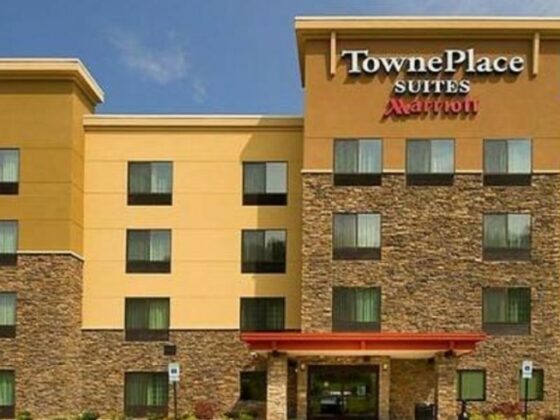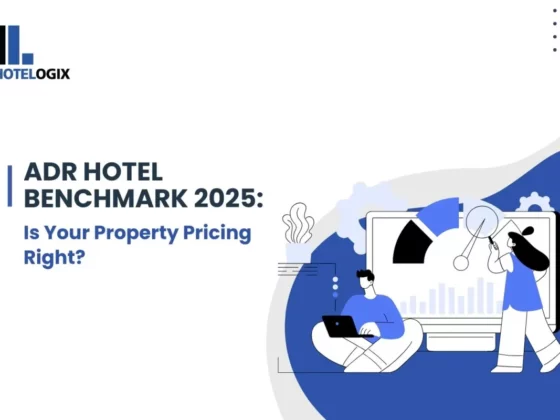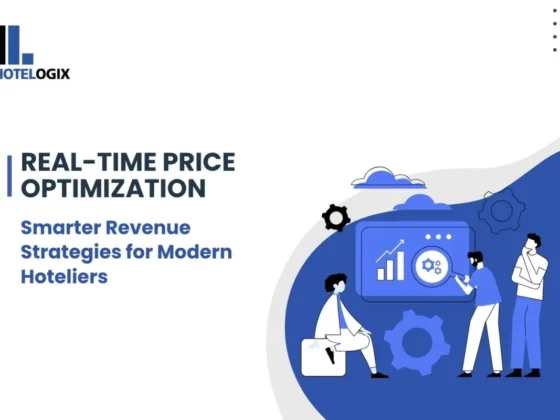What do hotel operations, outstanding guest experience, and long-term success as a hotel business have in common? None of these can be sustained without sound financial management. Understanding the key financial statements is the foundation on which any hotel owner, general manager, or department head can base their strategy. Without it, hoteliers risk missing revenue opportunities and financial red flags.
This article explains the two most crucial hotel financial statements: the hotel profit and loss statement (the hotel P&L or income statement) and the hotel balance sheet. We will explore what is included, why they matter, and how hoteliers can use them to make sharper and more sustainable business decisions.
What are Hotel Financial Statements?
Hotel financial statements are formal records that display the income and expenses of your hotel business. They help hoteliers and hotel owners evaluate a hotel’s financial performance in order to make informed decisions to support its profitability in the long term. Each statement plays an important role in offering a complete picture of a hotel’s financial health.
The three most common types are:
- Hotel Profit and Loss Statement (P&L / Income Statement): Shows the hotel’s revenues, expenses, and profits over a set period, typically monthly or annually. It helps evaluate operating performance by department and profitability.
- Hotel Balance Sheet: A snapshot of the hotel’s finances at a specific time. It shows what the business owns and owes by listing the hotel’s assets, liabilities, and equity.
- Cash Flow Statement: Tracks the actual movement of cash into and out of the business and is especially valuable for understanding the hotel’s ability to meet short-term obligations.
The standards for preparing financial statements outlined in the Uniform System of Accounts for the Lodging Industry (USALI) are used widely in the hospitality industry. USALI ensures that formatting is consistent across departments and properties, which makes performance benchmarking easier and more transparent.
Why Hotel Financial Statements Matter
Financial statements give you the most essential information about your hotel’s economic situation. They are not just accounting documents but valuable tools for managing operations and improving performance.
For example, the hotel profit and loss statement (P&L) shows how each department performs relative to the budget. You might notice that room revenue meets expectations, but spa sales are underdelivering, leading to labor costs outweighing the returns. Spotting trends like this helps hoteliers adjust staffing and refine offer pricing to improve the financial results of the different departments.
Hotel financial statements are crucial for profitability analysis and cash flow management. In the short term, understanding how much cash you have available will help you determine if you can meet your immediate liabilities, such as your employees’ salaries. In the long term, it supports broader hospitality management efforts such as budgeting, planning, and resource allocation.
If your hotel is seeking financing, such as a bank loan, lenders will assess your hotel’s risk and repayment capacity based on your financial statements. When you understand your balance sheet and cash flow statement, you are better equipped to negotiate terms that are the best for your business as a hotelier.
Pro tip: Financial literacy should extend beyond senior management. When department heads understand their department’s financial goals and what factors contribute to their profit, there is increased accountability and better budget discipline at every level of the hotel operation.
What is a Hotel Profit and Loss Statement (P&L)?
The hotel profit and loss statement (P&L), also known as the hotel income statement, is one of the most critical tools for hospitality finances.
It measures the hotel’s financial performance over a specific period, typically monthly, quarterly, or annually, and details all earned revenues and incurred expenses. It tells you at a glance whether the hotel is operating at a profit or a loss.
What is the Purpose of the Hotel P&L?
More than a financial report, the P&L is a roadmap for management decisions (or at least, it should be). It breaks down performance by departments, which allows hoteliers to:
- Track revenue generation by segment (e.g., rooms, F&B, spa)
- Monitor expenses
- Compare actual numbers to budget and forecast
- Identify opportunities to improve profitability
- Inform pricing, staffing, and resource allocation
The Industry Standard Format for Hotel Profit and Loss Statements
Most hotels follow the Uniform System of Accounts for the Lodging Industry (USALI), which is the standard structure for financial reporting in hospitality. It enables consistency and comparability of financial reports, making performance tracking easy and transparent.
A key feature of the USALI-format P&L is that it separates operating departments, which generate revenue, from undistributed departments, which, as support functions, do not. This makes it simpler to evaluate the profitability of individual functions in the business.
Key Components of a Hotel P&L
The Hotel P&L is divided into departments, designed to reflect the actual structure of the business. Unlike a generic business P&L, a USALI-aligned hotel P&L shows which areas are profitable and which need intervention, bringing more clarity and accountability for departments and credibility when presenting to investors or lenders. The key components are the following.
Departmental Revenues
This section shows revenue generated by the hotel’s operating departments. These typically include:
- Rooms Revenue: The primary revenue source for most hotels. Income from transient, group, and contract guests.
- Food and Beverage (F&B): Revenue from restaurants, bars, room service, and banquets.
- Other Operated Departments: What other income-generating services does your hotel offer? This could, for instance, be spa services, golf, parking, and retail.
- Miscellaneous Income: Fees, commissions, and service charges.
In-House vs. External Revenues Split
Want to go a step further? The USALI encourages hoteliers to distinguish between in-house revenue (revenue generated from guests staying at your hotel) and external revenue (from non-staying guests).
This distinction is essential for understanding to which your hotel is attracting outside demand, for example, for spa services or F&B.
Hotel Expenses: from Departmental to Undistributed
Just as important as looking at how much money is brought in is understanding how much it costs to generate this income. These expenses are either allocated per department or for the property as a whole.
Each department that generates revenue also incurs direct operating expenses, called departmental expenses, such as the salaries of the employees in the department, the cost of goods sold, and any department-specific supplies.
On the other hand, expenses incurred from support functions for the entire hotel that are not tied to one specific department are called undistributed operating expenses. Your IT, sales and marketing, administrative costs, and utilities all fall under this bracket.
Understanding Hotel Profitability: Gross Operating Profit (GOP) and EBITDA
Gross Operating Profit (GOP)
and EBITDA (Earnings Before Interest, Taxes, Depreciation, and Amortization) are two standard metrics that are important to understand for your hotel. While both measure profitability, they tell different parts of the story.
The GOP is one of the most important metrics in hotel finance, as it reflects the property’s operating efficiency before considering fixed charges.
If your GOP margin (GOP divided by total revenue) is unusually low, it may indicate that operational expenses are putting a strain on the hotel’s profitability.
What is considered a good margin? It depends on your hotel type:
- Full-service hotels average at a 25-35% GOP margin
- Limited-service hotels tend to see margins closer to 35-40% (source: STR)
Keep in mind, benchmarks only go so far. Your hotel’s location, positioning, and business model all play a role in determining what is realistic.
The Gross Operating Profit does not tell the full story, as many hospitality businesses have significant costs beyond those incurred from operations, and this is where EBITDA comes in.
EBITDA shows the hotel’s profitability after deducting fixed costs like rent, property taxes, management fees, and insurance. Because the fixed costs have been taken into account, it provides a more comprehensive view of the business’s financial viability, especially useful for investors and lenders.
How to Read a Hotel P&L
The hotel profit and loss statement can feel like an intimidating array of numbers at first glance, but it is intuitive once you become familiar with it. A simplified P&L format starts with departmental revenues and expenses, followed by undistributed costs, after which we can calculate the GOP, EBITDA, and net income.
A popular and effective technique for reading the P&L is to consider all costs as a percentage of their associated departmental revenue. This allows you to identify areas that incur out-of-proportion costs quickly.
Notice that your spa labor costs are 45% of total spa revenue, while the benchmark is closer to 30%? There may be inefficiencies worth addressing, especially from a revenue management point of view that connects pricing and operational cost control.
What is a Hotel Balance Sheet?
While the hotel profit and loss statement (P&L) shows performance over time, the hotel balance sheet is a snapshot of your property’s finances at a specific moment. It helps to assess if the business is financially sustainable.
The key elements include:
- Assets: What your business owns. Divided into current (cash, receivables, inventory) and non-current (property, equipment, long-term investments) assets.
- Liabilities: What your business owes, i.e., your hotel’s current and long-term financial obligations. Includes loans, vendor payables, and accrued expenses.
- Owner’s Equity: The owner’s stake in the property, calculated by subtracting liabilities from assets. It represents how much of the business is truly ‘owned’ after all debts are paid. For example, equity grows if the hotel pays off loans or the property value rises.
The fundamental accounting equation underlying the balance sheet is Assets = Liabilities + Owner’s Equity. This ensures that everything the hotel owns is either financed through debt or invested capital (equity). When the numbers on both sides match, the sheet is said to “balance”, hence the name balance sheet.
A strong balance sheet is characterized by a healthy ratio of assets to liabilities and a growing owner’s equity over time. Liquidity ratios such as the current ratio (current assets divided by current liabilities) help understand whether your hotel can meet short-term financial obligations.
How to Interpret a Hotel Balance Sheet
Interpreting a balance sheet requires context, as hotel types can have very different asset structures. For example, resort hotels might have significant non-current assets due to land and facilities such as golf courses or spas. Convention hotels might have more current liabilities because of frequent group bookings and ongoing hospitality events.
Red flags to look out for are a high debt-to-leverage ratio, which means you have borrowed too much money; there is too much leverage (high debt-to-equity); and a low current ratio, which means poor ability to meet short-term payments.
While a snapshot, hoteliers can use the balance sheet to understand longer-term trends: are assets increasing? Is the hotel retaining value over time? These points are especially crucial when communicating performance to owners and investors. Getting into the habit of returning to review the balance sheet monthly is a great starting point for hoteliers to grasp the bigger picture.
Common Mistakes in Hotel Financial Statements
Understanding hotel financials is less about reading numbers and more about the ability to see beyond them with accurate interpretation. Here are some common pitfalls
- Overlooking context when interpreting KPIs: RevPAR and GOP are only meaningful when compared over time against the budget and benchmarked to the market.
- Not differentiating between internal and external revenue: Without this, there is no complete picture of the performance or ability to attract outside demand of F&B, spa, and other outlets.
- Not returning to the financial statements: The P&L should be the starting point for operational adjustments, and should be revisited weekly, monthly, and seasonally.
- Treating all departments as one: When rooms, F&B, and spa are lumped together, there is no way to identify which departments are driving performance, and which could be more efficient.
Best Practices for Managing Hotel Financial Statements
To improve financial literacy and data-driven decision-making in your hotel, the following practices can help:
- Follow USALI: The benefits of following a standardized framework tailored to the hospitality industry are truly unmatched. No need to reinvent the wheel.
- Train department heads: When your heads of department are comfortable with financial data, they make smarter staffing, pricing, and procurement decisions. A shared mindset of ‘all costs matter’ will lead to more efficient operations across the board.
- Benchmark against the market: Comparing your performance to competitors or industry benchmarks helps with understanding the context and is a cornerstone of evaluating hotel performance. In which ways are you better, and where can you see room for improvement?
- Get comfortable with key metrics: The more you return to the financial statements and understand their components, the more insights you can get out of them to improve the financial sustainability of your hotel. Below, you can find and download a financial statements cheat sheet to remember the essentials:
From Bookkeeping to Better Business Decisions
Reviewing hotel financial statements should not be regarded as just a bookkeeping practice (or a necessary evil, if you will). Instead, these reports can empower hoteliers to make decisions based on facts that improve profitability, manage risk, and sustain growth in the long term.
Regular and accurate reporting combined with organization-wide financial literacy will position your hotel for better performance, as even operational teams can be aligned with the business’s strategic goals. Whether running a boutique hotel or managing a full-service resort, consider your P&L and balance sheet your best friends for making sound decisions.
Hotel Financial Statements FAQ
What is the difference between a P&L and a balance sheet?
The P&L tracks income and expenses over time and shows the profitability of the hotel. The balance sheet shows financial health at a single point, including assets, liabilities, and equity. Both are essential: the P&L helps manage day-to-day operations, while the balance sheet reflects long-term sustainability.
How often should hoteliers review financial reports?
At minimum, review them monthly to manage operations, quarterly for strategic decisions, and annually for external reporting or investor communication.
What’s the most important KPI in hotel financials?
It depends on your goals. Operators may focus on RevPAR or departmental performance, while owners and investors often prioritize GOP margin, EBITDA, or net profit.
EHL Hospitality Business School
Communications Department
+41 21 785 1354
EHL
















